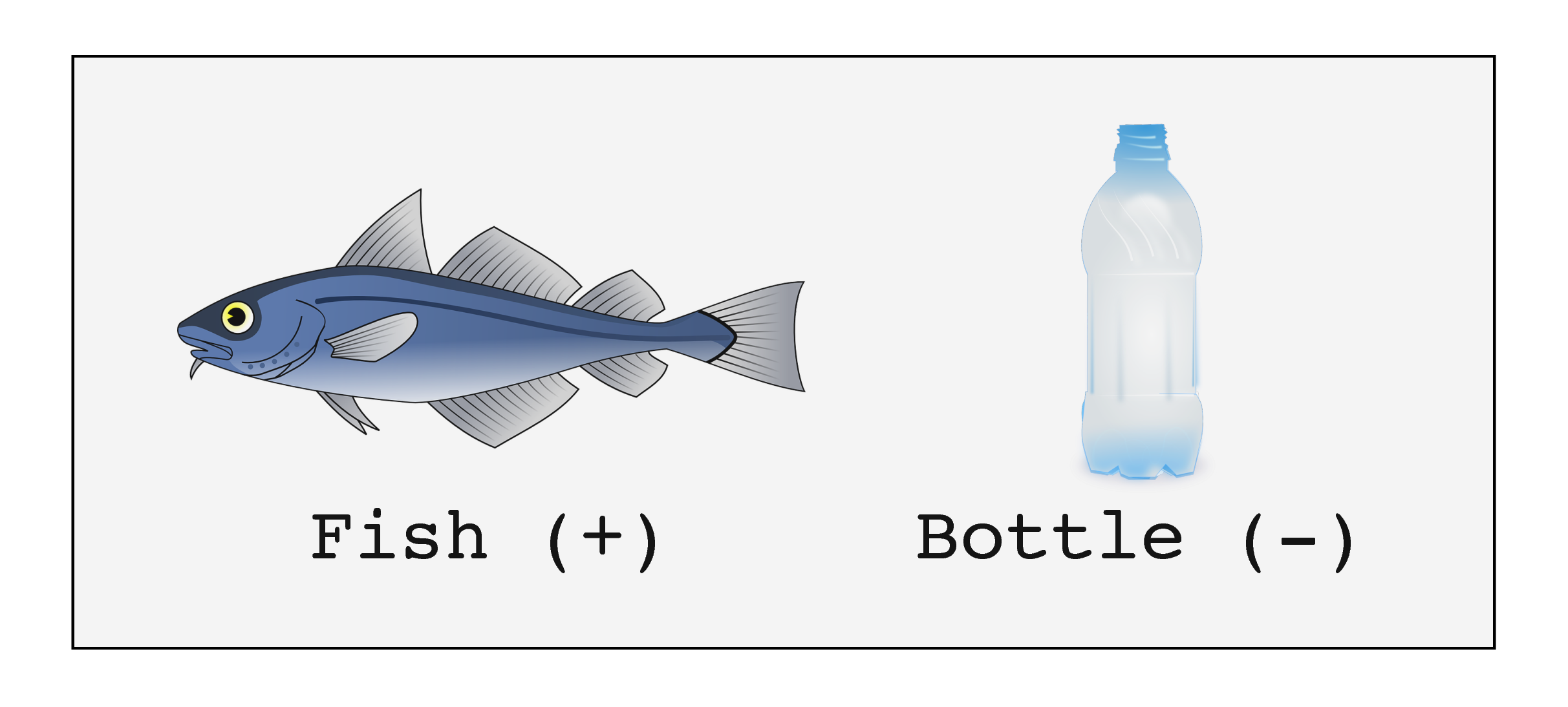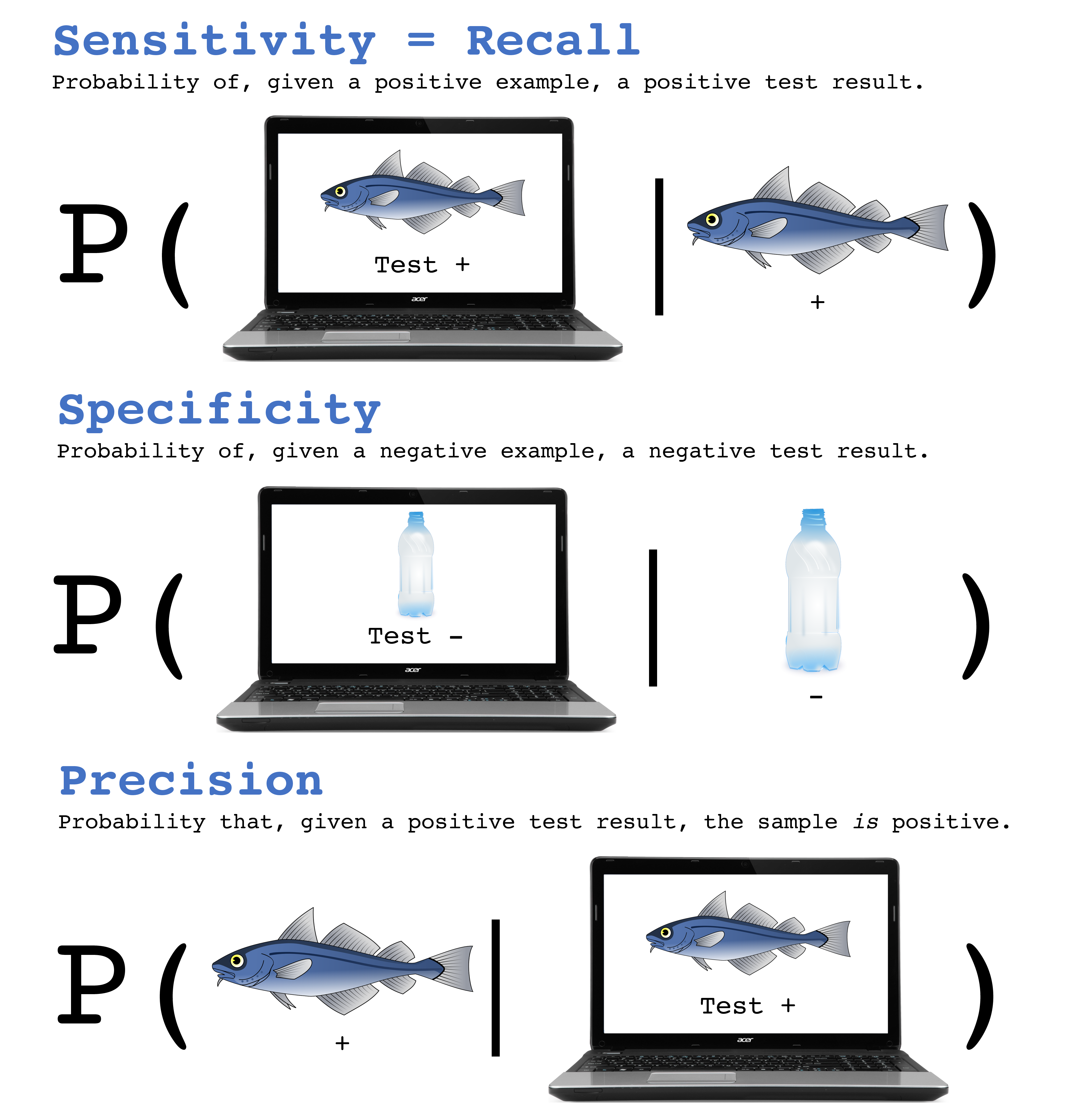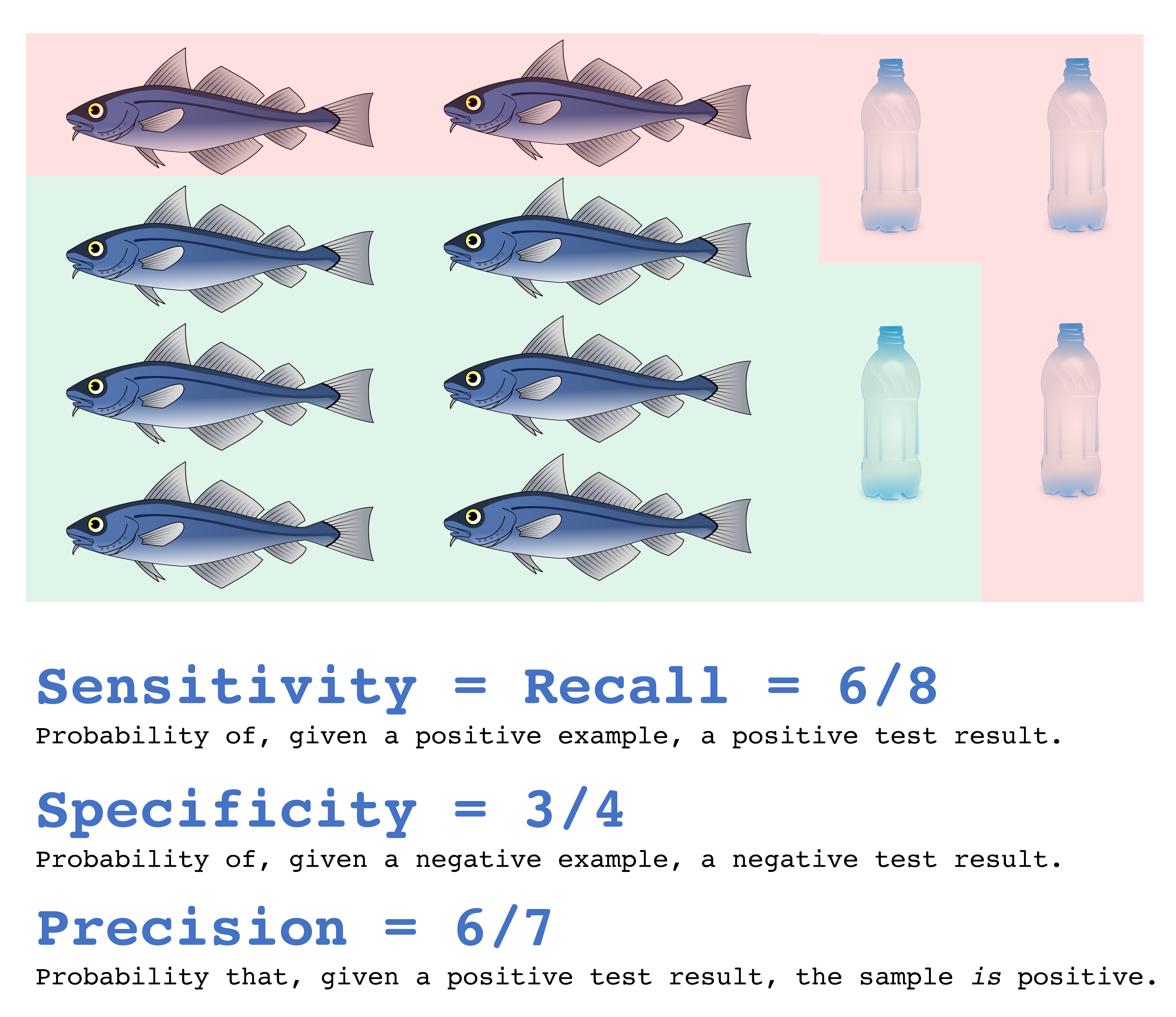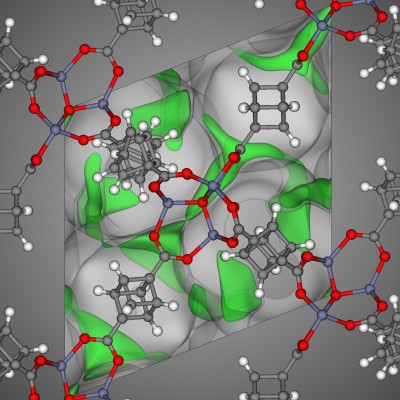When working with classification algorithms, I consistently need to remind myself of the definition of recall, precision, specificity, and sensitivity. So, I created an illustration for reference.
Imagine you’re on a fishing boat in the Great Pacific garbage patch. You cast your fishing net and retrieve a mix of fish and plastic bottles. A robot on the boat is equipped with a machine learning algorithm to classify each catch as a fish, defined as a positive (+), or a plastic bottle, defined as a negative (-).

The fish/bottle classification algorithm makes mistakes. To quantify its performance, we define recall, precision, specificity, and selectivity. Each are conditional probabilities. Note that the sensitivity (= recall) and specificity are each conditioned on the true class label.

Consider below the test set of eight fish and four plastic bottles. The algorithm classifies the catches highlighted in green as fish (+’s) and in red as bottles (-‘s). The sensitivity (= recall), specificity, and precision are written for this test outcome.

